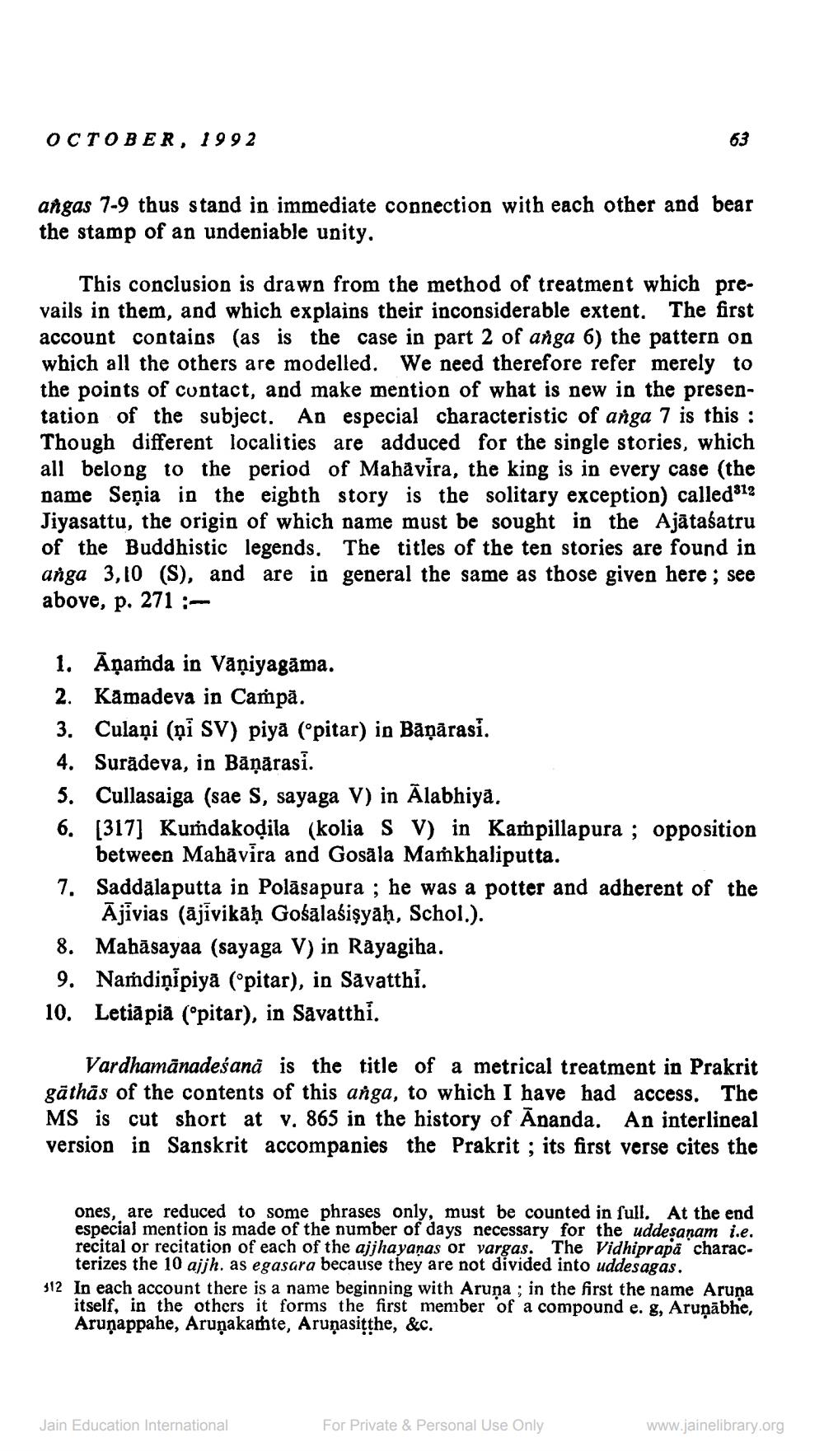________________
OCTOBER, 1992
angas 7-9 thus stand in immediate connection with each other and bear the stamp of an undeniable unity.
This conclusion is drawn from the method of treatment which prevails in them, and which explains their inconsiderable extent. The first account contains (as is the case in part 2 of anga 6) the pattern on which all the others are modelled. We need therefore refer merely to the points of cuntact, and make mention of what is new in the presentation of the subject. An especial characteristic of anga 7 is this : Though different localities are adduced for the single stories, which all belong to the period of Mahavira, the king is in every case (the name Seņia in the eighth story is the solitary exception) called812 Jiyasattu, the origin of which name must be sought in the Ajātasatru of the Buddhistic legends. The titles of the ten stories are found in anga 3,10 (S), and are in general the same as those given here ; see above, p. 271 ;
1. Āņamda in Vāņiyagama. 2. Kamadeva in Campā. 3. Culani (pi SV) piya (opitar) in Banarasi. 4. Surādeva, in Bāņārasi. 5. Cullasaiga (sae S, sayaga V) in Alabhiya. 6. [317] Kumdakoļila (kolia s V) in Kampillapura ; opposition
between Mahavira and Gosāla Mamkhaliputta. 7. Saddālaputta in Polāsapura ; he was a potter and adherent of the
Ājivias (ājivikāḥ Gośālaśişyaḥ, Schol.). 8. Mahāsayaa (sayaga V) in Rayagiha. 9. Namdiņipiya (opitar), in Savatthi. 10. Letiāpia (opitar), in Savatthi.
Vardhamānadeśana is the title of a metrical treatment in Prakrit gāthās of the contents of this anga, to which I have had access. The MS is cut short at v. 865 in the history of Ānanda. An interlineal version in Sanskrit accompanies the Prakrit ; its first verse cites the
ones, are reduced to some phrases only, must be counted in full. At the end especial mention is made of the number of days necessary for the uddesanam i.e. recital or recitation of each of the ajjhayanas or vargas. The Vidhiprapa charac
terizes the 10 ajjh. as egasara because they are not divided into uddesagas. 312 In each account there is a name beginning with Aruna; in the first the name Aruna
itself, in the others it forms the first member of a compound e. g, Aruņābhe, Arunappahe, Arunakatte, Aruñasitthe, &c.
Jain Education International
For Private & Personal Use Only
www.jainelibrary.org




